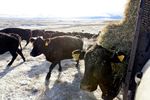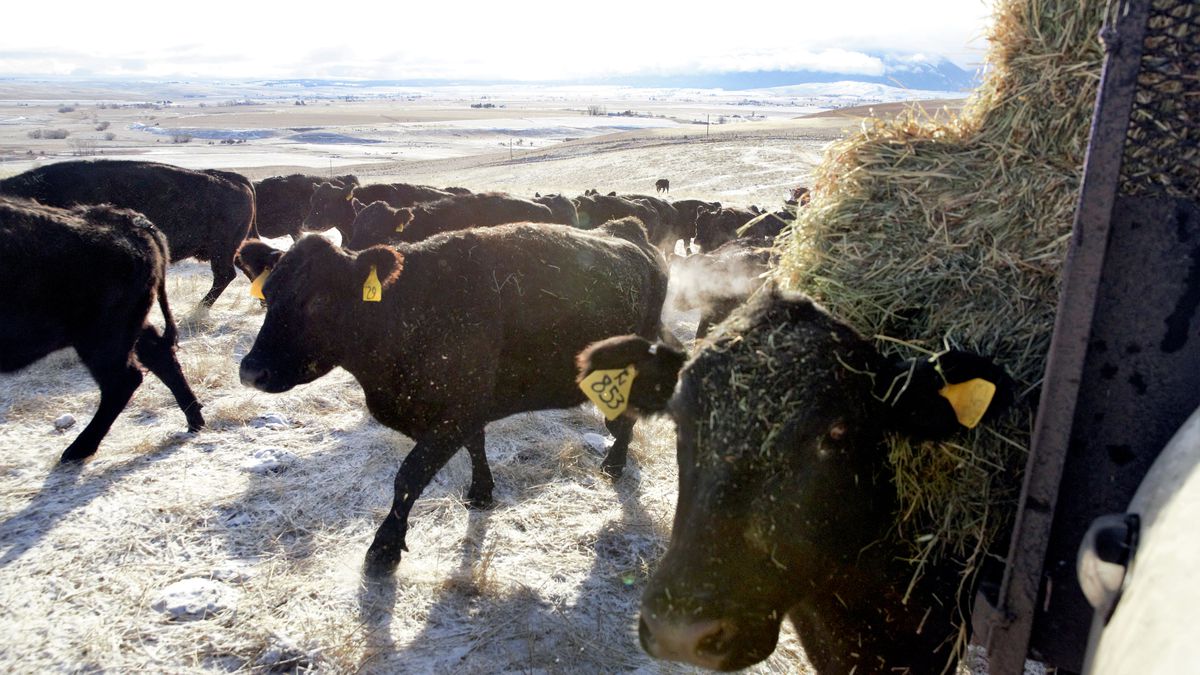
Editor’s Note: This story contains discussion of suicide and depression. If you or someone you love are considering self-harm, 24-hour assistance is available at the National Suicide Crisis Lifeline. Just call 988.

Cows follow a feed truck on a farm in Wallowa County on January 19, 2023. Studies by the U.S. Centers for Disease Control and Prevention find farmers are two to three times more likely to die by suicide than the general public.
Kristian Foden-Vencil/OPB
For years, Jim Hamsher worked on ranches, roping steers and cattle feed in Grant County. The list of those he lost to suicide is long and painful: “I lost my nephew, my uncle, my father-in-law, my brother-in-law’s daughter-in-law, my other beau’s son-in-law. -brother,” he said recently. “My neighbor. My neighbor behind him. I lost my classmates. I lost underclassmates who were a year older. Way too many.
Farming is hard work. The chores never end, and something as simple as bad weather can spell financial disaster.
Studies by the US Centers for Disease Control and Prevention reveal that farmers are two to three times more likely to die by suicide than the general public.
In an effort to help, Oregon lawmakers are considering Senate Bill 955, which would provide money to the state to support a suicide hotline for people who work the land.
Hamsher, a Grant County commissioner, said many ranchers just aren’t learning to seek help for mental health issues. In his experience, they tend to internalize issues and keep to themselves.
“They’re bred to be really tough and self-reliant,” he said. “Often the weight of the whole family farm rests on their shoulders.”
Hamsher said that while a farm worker wants to talk about their emotional state, their working day is usually spent alone. And in the unlikely event that there is a mental health clinic nearby, some people are reluctant to risk having it known across town that they are in trouble.
“They won’t risk driving there and being labeled as having any kind of problem,” Hamsher said. “So they don’t talk to anyone.”
Even helplines can be a problem.
“They may call a suicide line, and the well-meaning person on the other end may be from an urban area and not really understand what the farmer [or] the breeder is even struggling with it,” Hamsher said.
“It can make them feel even more isolated.”
All of these issues are well recognized by Dr. Allison Myers, associate dean of the College of Public Health at Oregon State University. She works to reduce the suicide rate in Oregon’s farming communities.
Senate Bill 955 would provide $300,000 to connect callers to an established helpline called AgriStress.

A screenshot of the AgriSafe website, where people working in agriculture can find mental health support. The company has an established helpline that currently operates in six states called AgriStress. Oregon Senate Bill 955 would provide $300,000 to link callers to the program.
Screenshot / AgriSafe.org
It already operates in six states: Connecticut, Missouri, Pennsylvania, Texas, Virginia and Wyoming. But it’s not yet in Oregon or Washington.
Myers said if the Oregon bill passes, a local rancher could call the national suicide prevention line 988, mention they are a farmer, and then be made available to AgriStress.
“The other way it could happen is they could call 988, and it could say, if you’re from a rural or remote or farming community, you can press four,” she said.
Myers said similar hotlines designed for veterans and Spanish speakers have shown promise.
“Sewing gives you a reason to believe,” she said. “It gives you a reason to know that the people on the other end of the line are just like you.”
AgriStress operators are trained to understand the importance of keeping farms in a family and the added stress of droughts and heat waves.
Jeff Stone of the Oregon Association of Nurseries follows Senate Bill 955. He said the cost of $300,000 was relatively low.
“It’s got the legs to get through,” Stone said.
Back in Grant County, Jim Hamsher need only look back on the pandemic to remember the severe stress in his own family. His son breeds rodeo bulls. When COVID hit, he lost $100,000 in contracts because rodeos closed. And these massive animals continued to need expensive food every day.
Hamsher said farmers constantly find themselves in dire financial straits. “All of their livelihood, all of the success of their ranch depends on the weather,” he said. “We have drought and there are rains and [rising commodity] prices.”
Senate Bill 955 has been sent to the Joint Committee on Ways and Means.
That means the passage is largely a matter of whether there will be money available when budget wrangling begins in earnest at the end of the 2023 legislative session in Oregon.
Oregon lawmakers must complete their work by the end of June.
